We chart John Lewis’ past and present design credentials as the British retail stalwart fetes its 150th anniversary

This week marks the 150th anniversary of British department store chain John Lewis. Opened in 1864 as a draper's shop on London's Oxford Street by its eponymous founder, the small shop quickly grew to become one of the most prominent retailers in the country. After taking the helm from his father, John Spedan Lewis made the revolutionary decision to start splitting the revenue from the shop sales with all its workers, which was at the time a very avant-garde way of conducting a business.
The list of achievements that the company has undertaken in its history is impressive, and John Lewis continues to focus on design, architecture and arts. Its constant dedication to a modern aesthetic and its admirable design patronage are evident in the list of collaborations and initiatives of the 20th century and beyond.
In 1937, Spedan Lewis commissioned young English architect William Crabtree to design a modern, spacious department store to substitute the existing Peter Jones building in Chelsea. Its streamlined glass and steel appearance was inspired by German department stores, proving to be shockingly modern for the times and still very much admired today (the company's architectural history is also explored in writer and critic Jonathan Glancey's 'A Very British Revolution', out this month) .
British designers Robin and Lucienne Day were taken on board as design consultants in 1962, bringing their modern taste to the department store through a 25-year-long collaboration, a legacy that is still tangible. They appointed graphic designer Peter Hatch to update the store's packaging and brand identity, who introduced contemporary touches such as the use of the Helvetica typeface and Op-Art-inspired shopping bags. The 1960s logo of the company was designed by Hans Schleger.
For the 100th anniversary of the company in 1964, British sculptor Barbara Hepworth was commissioned to create a celebratory piece and contributed one of her largest sculptures, 'Winged Figure', which still sits on one of the flagship's outer walls off Oxford Street. Hepworth's creation, two steel wings joined by metal rods, is a symbolic interpretation of the partnership's union of employees and management.
This year's celebrations include an in-store exhibition that covers the history of the company and its founders, with an installation by the Royal College of Art exploring the future of shopping. For the first time, the Oxford street store also opens its rooftop to visitors to enjoy expansive views of London and an installation by Tony Wood, Royal Horticultural Society National young Designer of the Year, in collaboration with John Lewis' own gardening team from the Longstock Estate (a 4,000 acre park owned by the partnership in Hampshire). A collection of celebratory items will also be launched in stores and online, which include special-edition items from the likes of Vitra, Alessi and Ercol.
Nowadays, design is fostered through the Design Collective venture, launched in 2012, where the company takes a roster of international designers under its aegis, putting their pieces into production and offering the chance to reach the broader British public. Over the years, the Collective has presented the pieces of British designer Matthew Hilton, Danish furniture maker Ebbe Gehl and Wallpaper* Handmade contributor Bethan Gray. This year's addition is a piece by Nottingham-based designer Oliver Hrubiak, a Scandinavian-inspired chair that combines powder coated steel, ash wood and veneer on a light, utilitarian frame (it is also recently scored a Design Guild Mark).
Next on the list of new projects is JLab, an incubator through which the retailer will mentor technology start-ups with a focus on innovations for shopping environments, once again forging a new path for contemporary retail.

Construction of the Peter Jones department store begun in 1934
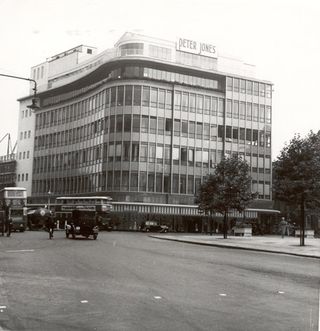
The building's streamlined glass and steel appearance was inspired by German department stores, proving to be shockingly modern for the times and still very much admired today
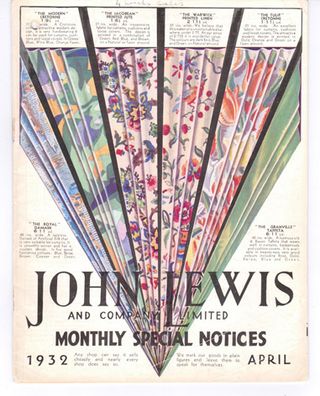
John Lewis' advertising from 1937
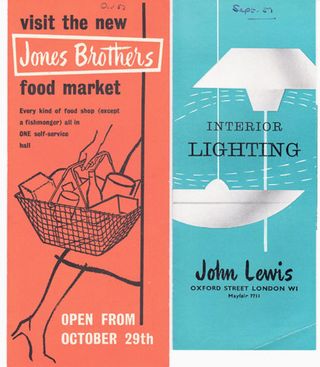
A 1957 advertising leaflet

In the 1960s, Peter Hatch was commissioned to update the brand's identity, while Hans Schleger worked on a new logo for the company

A 1960s window display at John Lewis

In 1962, British designers Robin and Lucienne Day were taken on board as design consultants, starting a 25-year-long collaboration. Here, Lucienne inspects a wall-hangings display at one of the John Lewis stores
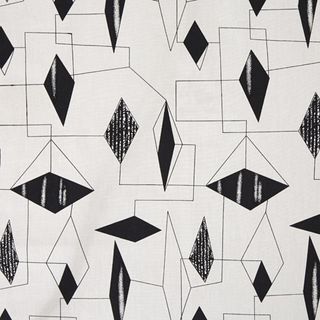
One of the fabric designs that Lucienne Day created for John Lewis during her collaboration with the store
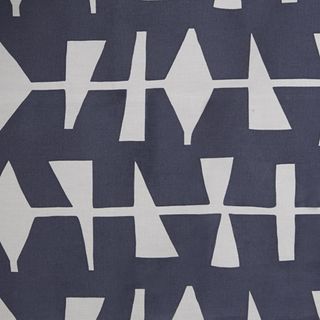
For its anniversary, John Lewis will sell a selection of Lucienne Day's textile designs from its archives
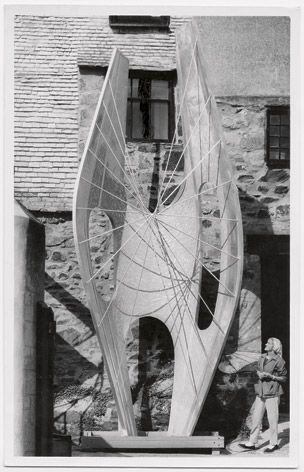
For John Lewis' 100th anniversary in 1964, British abstract sculptor Barbara Hepworth was commissioned to create a large scale sculpture for the Oxford Street store
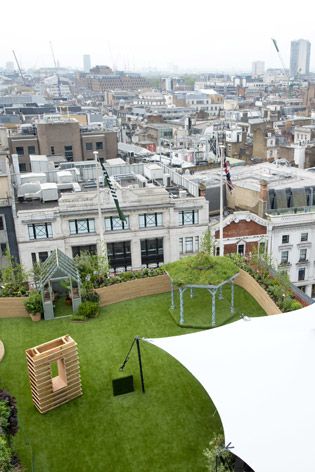
To mark its 150th anniversary this month, John Lewis' Oxford Street is hosting an instore exhibition (opening 3 May) looking back at its history alongside an installation by the Royal College of Art and - for the first time - is opening its rooftop to visitors. For the occasion, Tony Wood, Royal Horticultural Society National Young Designer of the Year, has created a green installation with the retail giant's own gardening team from the Longstock Estate in Hampshire
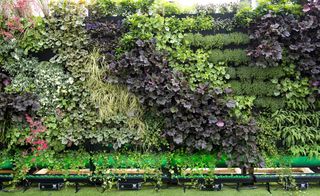
Installation view of the Tony Wood-designed garden installation on John Lewis' rooftop

In-store and online, John Lewis is also offering a series of celebratory products created by leading British designers and brands. Pictured here is a special gold edition of Lee Broom's 'Crystal Pendant' light
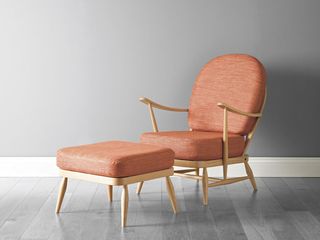
Ercol has produced an anniversary edition of its Windsor chair with updated upholstery

Alessi enlisted young Australian designer Adam Cornish to create the 'Trinity' centrepiece

Vitra, meanwhile, offered a new cherry wood interpretation of its HAL chair, designed by Jasper Morrison
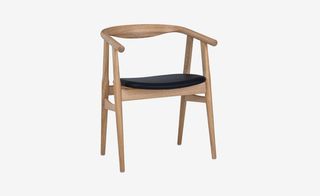
New additions to the extensive John Lewis homeware and furniture collections include Hans Wegner's 'U' Chair, sold exclusively at the department store
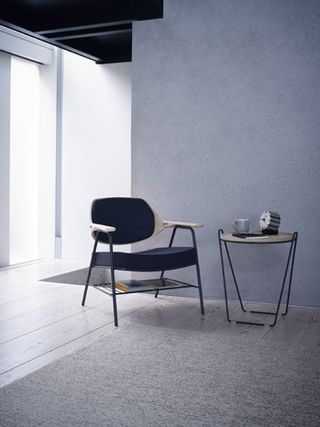
The Design Collective collection - an initiative through which John Lewis presents international designers and their products to the British market - has been updated this year with the work of Nottingham-based designer Oliver Hrubiak
Wallpaper* Newsletter
Receive our daily digest of inspiration, escapism and design stories from around the world direct to your inbox
Rosa Bertoli was born in Udine, Italy, and now lives in London. Since 2014, she has been the Design Editor of Wallpaper*, where she oversees design content for the print and online editions, as well as special editorial projects. Through her role at Wallpaper*, she has written extensively about all areas of design. Rosa has been speaker and moderator for various design talks and conferences including London Craft Week, Maison & Objet, The Italian Cultural Institute (London), Clippings, Zaha Hadid Design, Kartell and Frieze Art Fair. Rosa has been on judging panels for the Chart Architecture Award, the Dutch Design Awards and the DesignGuild Marks. She has written for numerous English and Italian language publications, and worked as a content and communication consultant for fashion and design brands.
-
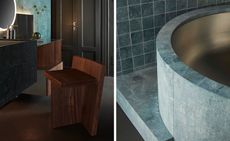 ‘The Small Hours’ bathroom collection by Patricia Urquiola for Salvatori is an ode to having time for yourself
‘The Small Hours’ bathroom collection by Patricia Urquiola for Salvatori is an ode to having time for yourselfPatricia Urquiola's new bathroom collection pushes Salvatori's formal aesthetic with an unprecedented combination of stone and steel
By Cristina Kiran Piotti Published
-
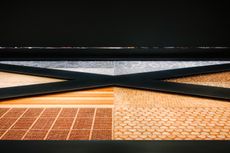 Hermès celebrates the materiality of earth in theatrical Milan Design Week 2024 spectacle
Hermès celebrates the materiality of earth in theatrical Milan Design Week 2024 spectacleThe Topography of Material is Hermès Milan Design Week 2024 display at La Pelota, focused on an installation exploring the materiality of earth and celebrating new and archival objects
By Rosa Bertoli Published
-
 Elias Sime reflects on the destructive nature of technology in Venice
Elias Sime reflects on the destructive nature of technology in VeniceIn his solo show ‘Elias Sime: Dichotomy ፊት አና ጀርባ’ at the Venice Biennale 2024, the artist spotlights technology's destructive nature for humans and the environment
By Gameli Hamelo Published